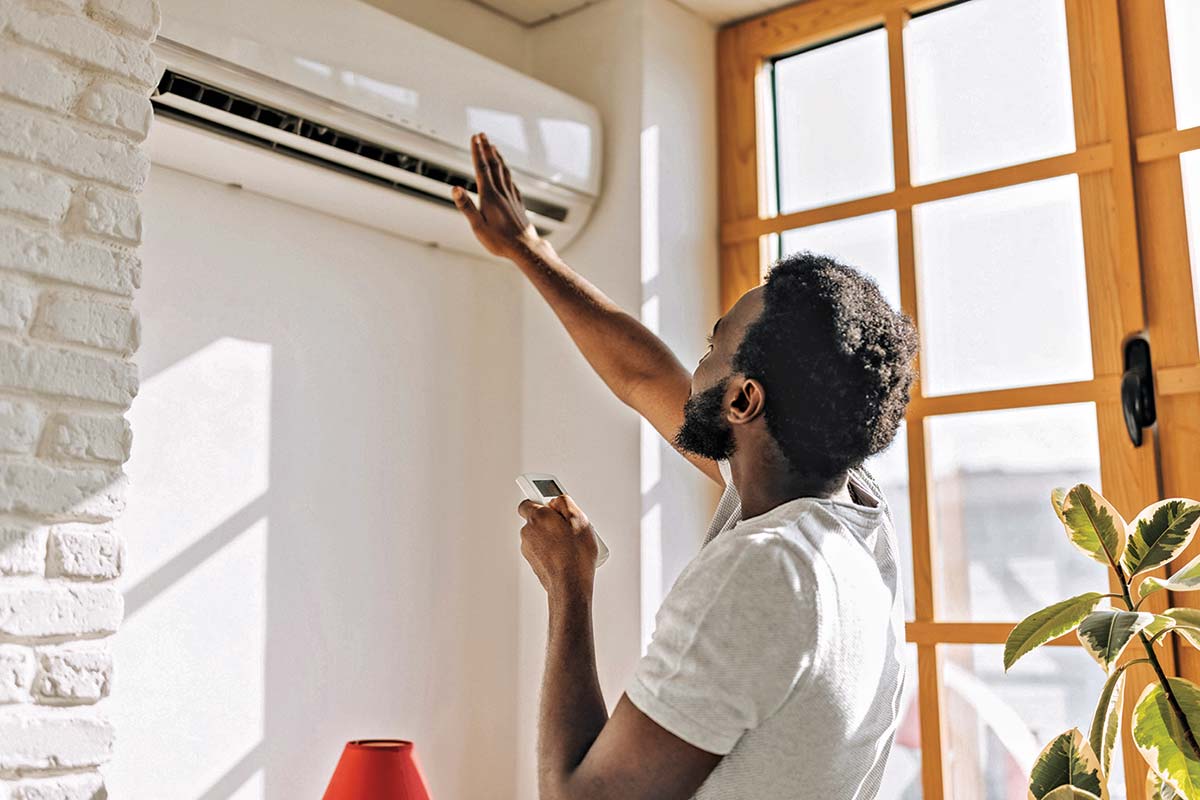If you’re building a home or considering revamping your home cooling system, room air conditioners might suit your needs better than a whole-home air conditioning system.
Room units cool individual spaces rather than the entire home, making them less expensive to operate than central units. While their efficiency is generally lower, they are ideal for cooling smaller spaces. Here’s some information to help you make the best decision on how to cool your home.
Efficiency measurement: The efficiency of a room air conditioner is measured by the energy efficiency ratio, which is the ratio of the cooling capacity to the power input. The higher the EER, the more efficient the air conditioner.
Cooling capacity: The required cooling capacity depends on the room size. Room air conditioners generally range from 5,500 to 14,000 British thermal units (a measure of cooling power) per hour. Typically, you need 20 Btu for each square foot of living space. Consider room height, local climate, shading and window size when selecting an air conditioner.
Proper sizing: Choose a unit that fits the room. An oversized unit will cool the room too quickly without dehumidifying it properly, leading to discomfort. A smaller, appropriately sized unit running for a longer period operates more efficiently and effectively.
Power needs: Consider the power requirements. Smaller units (less than 7.5 amps) can plug into any 15- or 20-amp, 120-volt household circuit not shared with major appliances. Larger units (more than 7.5 amps) require a dedicated 115-volt circuit, and the largest models need a 240-volt circuit.
Directional airflow: For corner installations, select a unit that can direct airflow as needed. For long rooms, look for fan controls with “power thrust” or “super thrust” features.
Ease of maintenance: Choose a unit with a filter that slides out easily for cleaning.
User-friendly controls: Look for logically arranged controls, a digital thermostat readout, a built-in timer and mobile app control.
Installation tips: Ensure the unit is level for efficient drainage and operation, and avoid placing lamps, TVs or appliances near the thermostat.
Thermostat settings: Set the thermostat as high as comfortably possible to reduce energy use. Don’t set the thermostat colder than necessary; it won’t cool the room any faster and will waste energy.
Fan speed: Use medium or high speed, except on very humid days, when low speed improves comfort and dehumidification.
Additional cooling: Use an interior fan with your window air conditioner to spread cool air without significantly increasing electricity use.
Home insulation: Make sure your home is well insulated and sealed. Efficient operation of any AC system relies on a properly insulated and air-sealed home to minimize cooling loss and lower your electric bill.


